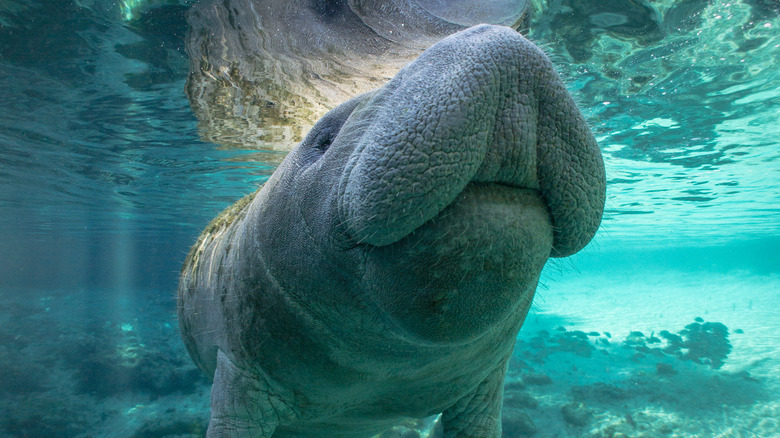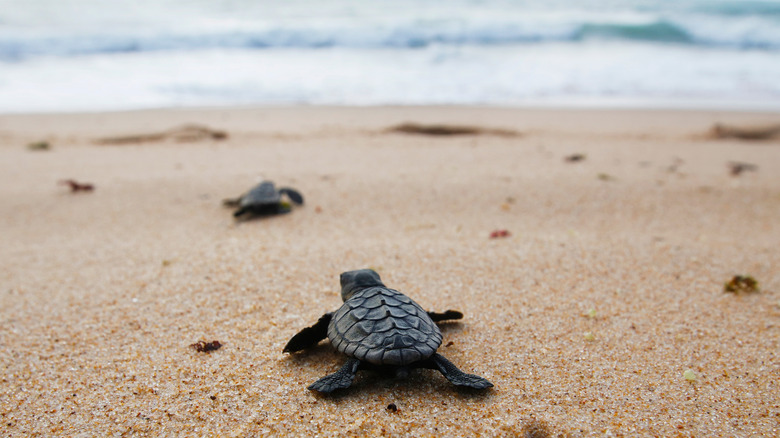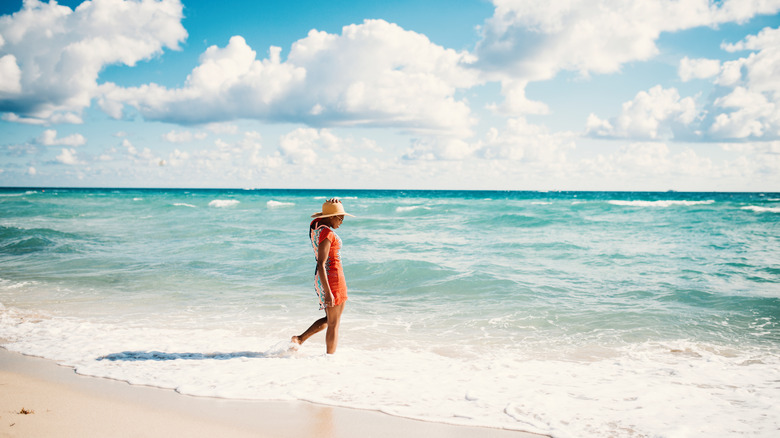Catch A Glimpse Of Incredible Ocean Wildlife At This Florida State Park
If you've ever wanted to feel like the proud owner of a private island, but you don't quite have the budget for it, then Cayo Costa State Park might just be the answer. Sitting 90 minutes southwest of Tampa, Florida, in the Gulf of Mexico, this barrier island is celebrated for its white sandy beaches, warm teal waters, and wide-open spaces away from the crowds. It boasts 9 miles of untapped coastline and 2,420 acres of protected wilderness, making it the perfect place to step back in time and experience a taste of "Old Florida."
The abundance of wildlife is your first clue that you're far away from the hustle and bustle of the mainland. On the east side of the island, below Pelican Bay, there's a lagoon called the "Manatee Hole," known as the best place to spot a manatee. Beneath the surface, snorkelers will find an abundance of fish like flounders, snooks, trout, redfish, snappers, whitings, sheepshead, and tarpons. Don't be surprised if a curious pod of dolphins comes over to say hello, as they are frequent visitors to the area. Should you foray into the coastal mangroves in a kayak, you may even spot an alligator or two. This is Florida, after all.
Sea turtles and bird spotting
Along the shore, four species of sea turtles call this island home, including green turtles, loggerheads, hawksbills, and Kemp's ridley turtles. From May to October, the shore is a busy nesting ground that's closely monitored by rangers and conservationists. Each season, the beach holds 300 nests with 100 eggs each, totaling 30,000 eggs! Of these, 80% will hatch and half of them will survive, says Florida State Parks. If you encounter marked sea turtle nests, be sure to give them plenty of space.
Cayo Costa is also a great birdwatching destination. From the end of winter through spring, numerous birds build their nests on the untouched shoreline. To keep predators at bay, you can do your part and properly dispose of any food you bring with you, lest critters come looking for a meal and stumble on a bird nest or turtle eggs. As you explore the island, look to the water and trees to spot oystercatchers, ospreys, egrets, bald eagles, and snowy plovers enjoying their habitat.
Another popular activity is beachcombing, also known as shelling. For 4,000 years, Cayo Costa was used as a fishing ground for the Caloosahatchee people and later Cubans under Spanish rule. As a result, large mounds of shells were left behind, in addition to the treasure trove of clam, scallop, and oyster shells you'll see along the shore at low tide. Before handling any shells, ensure that no one's home, as a hermit crab may still be inside.
What to know before you go
Up until recently, Cayo Costa offered equipment rentals, amenities, and accommodation. Sadly, though, the infrastructure was all but wiped out by Hurricane Ian in September 2022, explains a letter from the manager on the state park's website. Though the island is still under repair, it recently reopened on October 25, 2023. The ferry services are suspended for the time being, but the beaches are open to visitors every day from 8 a.m. to sunset, provided that you arrive in a private vessel, like a boat or kayak.
Friends of Cayo Costa State Park, the nonprofit working to protect the landscape, has a great map of the island on its website to help you plan your trip. The state park costs $2 per person. It works on the honor system, where you bring exact cash or change and drop it in an envelope at the change box. There are restrooms on the gulf side of the island (west), but no other amenities have been restored yet like running water, Wi-Fi, electricity, stores, or cabins, notes Florida State Parks. You'll have to bring your own folding chairs, snorkel gear, snacks, and anything else you'll need for the day. For this underrated beach, the planning is well worth it.


